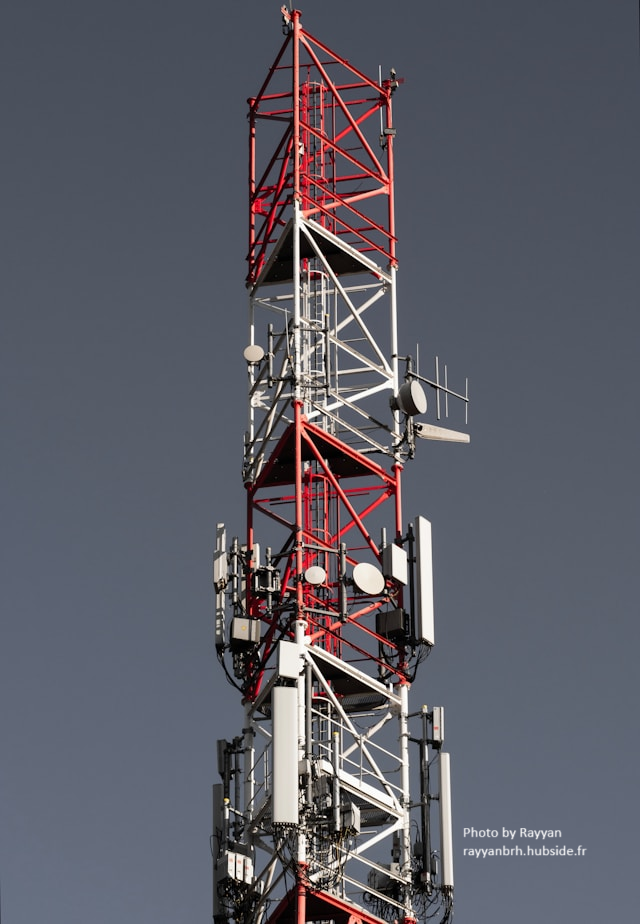Exploring the Role of Fibre Optics in 5G Network Deployment
Published on 14 August 2025 by Light4Tech Solutions

The emergence of 5G technology will transform how people connect and share data as well as how they communicate through networks. The true unsung champion of high-speed connections exists beneath the excitement of quick downloads and minimal latency through fibre optics. The backbone of 5G infrastructure consists of invisible fibre optic systems which enable the exceptional performance of the network for end-users. The article explains why fibre plays a crucial role in 5G deployment together with the obstacles in its installation and new advancements that will drive connectivity development.
The Backbone of High-Speed Connectivity
5G networks require an unprecedented capacity to manage vast amounts of data. The network supports both high-definition video streaming as well as essential remote surgical procedures. The network needs to provide bandwidth at gigabit-per-second levels while maintaining latency below one millisecond. The high data requirements of modern networks exceed the operational efficiency of traditional copper cables. Through light pulses as data transmission signals fibre optics enable fast speeds at large capacities over extended distances without signal loss.
Your device receives wireless connection through 5G radio antennas while fibre optics handle the demanding network load that connects towers to data centers and core infrastructure. The robust high-capacity backbone of fibre optics ensures the 5G promise moves beyond marketing fantasy toward actual network capability.
Fibre and 5G’s Small Cell Revolution
5G networks function through small cells which are small base stations deployed in close groups to preserve reliable wireless connections. 5G operates with a different architecture than 4G because its high-frequency spectrum demands many base stations installed at short distances from each other. Each cellular unit needs to connect to the central network through powerful backhaul transmission links. Fibre optics serves as the top choice for these connections because it provides dependable performance alongside extensive expansion capabilities.
The new network architecture requires fibre networks to penetrate deeply into cities by installing infrastructure on streetlights and building facades and transport hubs. The deployment of more fibre enables 5G networks to efficiently serve increasing user demands while preventing network congestion.
Challenges in Fibre Deployment for 5G
The deployment of fibre networks for 5G faces significant challenges despite its evident benefits. The implementation process demands extensive labor resources and major funding commitments. Fibre deployment in urban areas demands technicians to navigate utility systems while minimizing public disruptions and managing regulatory requirements. The investment return for rural and remote areas is negatively affected by their extended distances and low population density.
The efficient deployment of fibre networks requires telecommunications operators to work together with municipal authorities and infrastructure providers for coordination purposes. Micro-trenching techniques for road fibre installation and aerial deployment methods using utility poles help decrease costs and accelerate fibre installation procedures.
Fibre’s Role in Future-Proofing Networks
Fibre optics demonstrate exceptional future-proof capabilities because of their ability to scale efficiently. As 5G advances into its subsequent stages before 6G emerges fibre networks will maintain their position as dependable high-capacity infrastructure. The equipment located at fibre endpoints can be upgraded to enhance fibre networks without needing new spectrum allocations or antenna upgrades which wireless technologies require.
The long-term adaptability of fibre investments will generate returns across multiple decades to support emerging technologies like autonomous transport and immersive VR/AR applications and massive IoT ecosystems.
The Bottom Line
The deployment of 5G networks heavily relies on fibre optic systems. The public attention focuses on 5G wireless features yet fibre operates discreetly to enable these capabilities. Fibre stands as an unrecognised foundation for the connected future because it supports both dense small-cell networks and ultra-low latency connections. The advancement of fibre infrastructure will continue to be essential for governments and telecom providers and technology innovators who aim to deliver faster and more reliable connectivity.